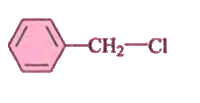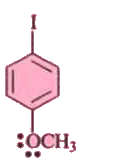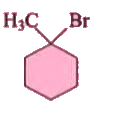A
B
C
D
Text Solution
AI Generated Solution
The correct Answer is:
|
Topper's Solved these Questions
ORGANIC CHEMISTRY : SOME BASIC PRINCIPLES AND TECHNIQUES
ICSE|Exercise TRUE OR FALSE TYPE QUESTIONS|50 VideosView PlaylistORGANIC CHEMISTRY : SOME BASIC PRINCIPLES AND TECHNIQUES
ICSE|Exercise FILL IN THE BLANK TYPE QUESTIONS |46 VideosView PlaylistORGANIC CHEMISTRY : SOME BASIC PRINCIPLES AND TECHNIQUES
ICSE|Exercise ESSAY ( LONG ANSWER ) TYPE QUESTIONS|42 VideosView PlaylistHYDROGEN
ICSE|Exercise NCERT TEXT-BOOK EXERCISE (With Hints and Solutions)|53 VideosView PlaylistREDOX REACTIONS (OXIDATION AND REDUCTION)
ICSE|Exercise NCERT TEXT-BOOK. EXERCISES ((With Hints and Solutions)|69 VideosView Playlist
Similar Questions
Explore conceptually related problems
Knowledge Check
Similar Questions
Explore conceptually related problems
ICSE-ORGANIC CHEMISTRY : SOME BASIC PRINCIPLES AND TECHNIQUES -OBJECTIVE ( MULTIPLE CHOICE ) TYPE QUESTIONS
- The reaction, RX + OH^(-) to R-OH + X^(-), is
01:43
|
Play - The reaction CH3 Br + OH^(-) → CH3 OH + Br^(-) follows
03:35
|
Play - An S(N^2) reaction occurs through the formation of a
03:08
|
Playing Now - The reaction, CH4+Cl2 overset("hv") to , CH3 Cl+HCl, occurs through
02:15
|
Play - Which of the following acts as a nucleophile?
03:47
|
Play - Which of the following has the highest nucleophilicity ? F^(-) OH^...
02:35
|
Play - The order of reactivities of the following alkyl halides for an S(N^2)...
02:49
|
Play - Following reaction, (CH3)3 CBr +H2O to (CH3)3 COH +HBr is an ...
02:17
|
Play - Due to the presence of an unpaired electron, free radicals are
01:50
|
Play - The organic chloro compound, which shows complete stereochemical inve...
02:21
|
Play - Which one is a nucleophilic substitution reaction among the following ...
10:11
|
Play - The order of stability of the following carbocations CH2 = underset...
02:02
|
Play - The correct statement regarding electrophile is
02:05
|
Play - The most suitable method of separation of 1:1 mixture of ortho and par...
04:36
|
Play - Identify A and predict the type of reaction
06:08
|
Play - The IUPAC name of the compound
02:41
|
Play - Which of the following is correct with respect to -|-effect of the sub...
02:26
|
Play - Which of the following carbocations is expected to be most stable?
04:27
|
Play - Which of the following compounds will be suitable for Kjeldahl's metho...
02:02
|
Play - The number of sigma (sigma ) and pi (pi) bonds in pent-2-en-4-yne is :
03:20
|
Play



